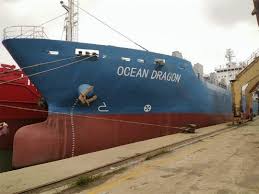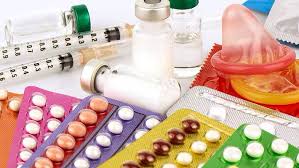Indian Maritime training institutes are believed to be relieved about the recent move of the Directorate General of Shipping (DGS) to relax faculty qualification norms to address the severe shortage of trainers and lecturers.
The institutes have been fighting hard with the DGS to relax faculty norms so that it would easy for them to attract quality teachers. The DGS accepted the demand recently.
Indian Maritime training institutes are believed to be relieved about the recent move of the Directorate General of Shipping (DGS) to relax faculty qualification norms to address the severe shortage of trainers and lecturers.
The institutes have been fighting hard with the DGS to relax faculty norms so that it would easy for them to attract quality teachers. The DGS accepted the demand recently.
According to the recommendation of the collegium, the DGS has waived the teaching and sailing experience required for the approval of teachers of subjects in pre-sea, officer-level courses.
It has been decided that the officer holding the Certificate of Competency as MEO Class-I or Master can teach the relevant marine subjects of pre-sea, officer-level courses. Similarly, no teaching experience is required for the approval of the faculties teaching the non-marine subjects but the educational qualification requirement has to be according to UGC or AICTE norms.
While it is difficult to ascertain the faculties available, the DGS requires a ratio of 1:8 for practical and 1:15 for classrooms, said an industry source. There are around 120 maritime training institutes but only about 20 of them are conducting long-time courses. There should be around 600 faculty members.
Local sourcing
The DGS move has come as a big relief for the institutes that produce hundreds of maritime cadets every year to work on ships across the world. The institutes manage with officers who come back on leave and take up part-time teaching assignments. But now the institutes need not wait for such people and can source faculty locally, said an industry source.
Capt Vivekand said shortage of faculty is very serious in maritime training institutes not only in India but all over the world because it is very difficult to attract seafarers to come ashore as a direct result of the very high salaries that are paid to them on board ships. Salaries ashore for faculty members are not even 30 per cent of what they would earn on board ships. More often than not, mariners come ashore only due to family pressures. This phenomenon is global.
The country needs at least another 400 faculty members to do justice to maritime training. “At present, we manage by mostly using visiting faculty members and running with minimum faculty at heavy workloads,” he said.
The demand from the industry to waive the requirement of five years of sea service, including one year of sea service at management level, rose from the dire need to get more faculty members to meet the acute shortage. Captains and Chief Engineers, by virtue of their professional qualifications and vast experience on ships, do not require teaching experience to be a faculty at a maritime training institute. This point was brought home to the DGS, who took cognizance of it, he said.
What now remains is for the DGS to permit mariners holding Master and Class-I Marine Engineer Officer Certificates from foreign countries (that are on IMO White List) to teach in maritime training institutes in India. There is no reason for them to be barred from doing so, as is present the case now, he said.
Metro advantage
Shortage of faculty has been a serious issue, particularly for institutes that are not located in metros — like the schools in Madurai, Coimbatore, Pondicherry, and the few located between Mumbai and Pune. For institutes in Chennai or Mumbai, the situation is better.
As the institutes are closer to the city, said a former captain of a ship who is heading a large institute in Chennai, attrition of faculty is minimal. There is a sense of fulfilment and pride among these people as they work for large institutes. Going a step further to meet the faculty shortage, the DGS has allowed an institute located in a smaller town to organise lectures through video-conferencing. The reason: Sailing staff when on leave can work as part-time faculty and are more readily available in metros, like Chennai.
According to Mr Sanjeev S. Vakil, Managing Director, HIMT, there is no shortage of faculty at good institutes. Those institutes that do not pay well and not take care of the faculty need to keep changing faculty. “We have a very high retention rate of the faculty, and many of them have completed a decade of service with us,” he said.
Demand curve
The faculty demand would certainly keep increasing if the government keeps granting approval to more institutes. However, DGS has now approved one of the institutes to conduct training via videoconferencing, which certainly would reduce the faculty demand. Good institutes could provide expert guest lectures through this mode but certainly cannot entirely replace the need for faculty.
Moreover, there is a proposal to allow a faculty to lecture 120 students in three classes simultaneously. This will further reduce the demand of faculty. Institutes approved to conduct such classes can attract good teachers by paying higher wages, as their cost would reduce by three times, he said.
















Discussion about this post